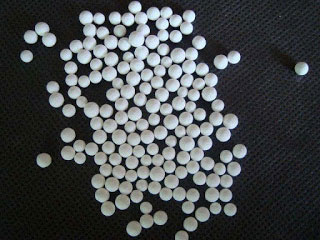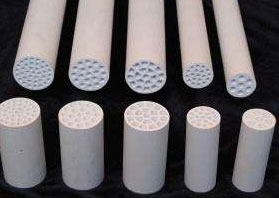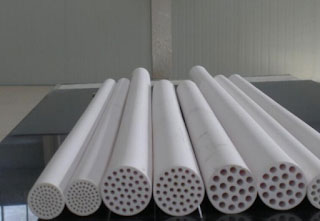China is the world's largest producer and consumer of dyes. However, at present, the product structure of domestic dye manufacturers is not reasonable enough, the proportion of low-grade dyes is too large, and high-grade dyes are few. In particular, there are product quality problems such as high salt content and low purity of reactive dyes. The price of dyes produced in China on the international market is only 40% to 70% of the price of foreign products. The traditional production process of reactive dyes is obtained by salting out (using Nacl to precipitate the dye from aqueous solution), so that the salt content in the finished dye is high, which seriously affects the quality of the finished dye. So it is necessary to carry out
salt purification. The development and research of refining technology for crude dyes is very important.
Reactive violet dye
Nanofiltration membrane is a new type of industrial membrane that appeared in the 1980s. Its interception relative molecular mass is 200-2000. Since the separation layer on the surface is composed of a polyelectrolyte, the surface of the film is often negatively charged. Most reactive dyes have a relative molecular mass of several hundred, just within the molecular weight cut-off of the nanofiltration membrane. At the same time, the nanofiltration membrane allows small molecule impurities and monovalent inorganic salts to pass. Therefore, nanofiltration technology is a good way to solve the problem of dye purification (desalting and impurity removal).
At present, some researches have been done on the desalting and concentration of dyes in nanofiltration membranes in China. However, most of the research focuses on the membrane separation performance, that is, the effect of factors such as the concentration and type of salt in the feed solution, operating conditions and membrane characteristics on the separation performance for different dye systems. There are relatively few studies on the separation and purification process.
 Application Of Ceramic Membranes In Wine Industry And Its Application Prospects
01 Feb 2019
Application Of Ceramic Membranes In Wine Industry And Its Application Prospects
01 Feb 2019
 Ceramic Membrane For Traditional Chinese Medicine Production And Plant Extraction
05 Feb 2019
Ceramic Membrane For Traditional Chinese Medicine Production And Plant Extraction
05 Feb 2019
 Application Of Ceramic Membrane Equipment In Transformer Oil And Gas Separation
12 Feb 2019
Application Of Ceramic Membrane Equipment In Transformer Oil And Gas Separation
12 Feb 2019
 Ceramic Membranes Are Used In The Automotive Field Due To Their Good Performance
27 Jan 2019
Ceramic Membranes Are Used In The Automotive Field Due To Their Good Performance
27 Jan 2019


 +86-25-58849045
+86-25-58849045 
 No. 9 Yuansi Road, Pukou, Nanjing, Jiangsu, China 211808
No. 9 Yuansi Road, Pukou, Nanjing, Jiangsu, China 211808